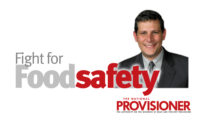Compliant and You Know It!

Have you asked yourself the following question? How do I, as the person in my organization who is accountable for compliance, hold my fellow leaders, that is, operational, maintenance, quality, and folks on floor, accountable for reliably executing their part of our compliance plan?
The U.S. Environmental Protection Agency (EPA)’s risk management plan (RMP), the Occupational Safety and Health Administration’s process safety management (PSM) regulation, as well as all state and local permits are designed to reduce the likelihood and/or consequences of an accident or major process failure associated with your respective manufacturing systems. Each was born out of several major accidents that led to the need for governmental oversite. Hopefully, you have a trusted resource with regulatory knowledge and experience that can provide your manufacturing plant(s) with a compliance plan. Is that enough? NO! You must ensure compliance each minute of each hour of operation. Having the permit or plan is not enough.
Your next thought about your air or stormwater permit and plan occurs when there is a knock on your door and an inspector from EPA is “here to help you,” in their words. They have reviewed your past compliance inspections and have a few questions. In addition, they are going to completely review your RMP. Fast forward to the wrap-up meeting, and the inspector compliments you on the completeness of your RMP but notes several items you are not doing per your written documents. Citations and a request to submit your action plans to correct the outages follow. As the plant or compliance manager, you are surprised and disappointed at the same time. You want to blame the consultant who authored your compliance plan but you can’t, due to the compliments on your plan from the inspector. Now What?
We as humans, unlike electronic devices, have free will. For example, we can choose how we are going to accomplish a task. In contrast, an automatic sampling device can only perform sampling as it is programmed to do. Both the PSM standard and RMP of regulated manufacturing operations rely on compliance plans that reduce or eliminate the likelihood/consequences of a failure. Your compliance plan includes many administrative controls to meet your objective of regulatory compliance. These Good Manufacturing Practices were generated by your industry and incorporated into your plan. But did you test, verify, and regularly evaluate the human elements as you do your equipment, that is, process controls, automatic sampling, clean-in-place sanitation, calibrations, etc.? Probably not, and you are not alone.
A thought on how to solve this problem is to first separate your engineering controls from your administrative procedures. Then, with the people who are performing these tasks (a requirement for a process hazard analysis), determine “the way” each task will be done. Document and train as required and then test “the way” to ensure it is doable by all and delivers reproducible compliance. Two guiding principles I recommend when developing administrative controls for compliance are: 1) Nothing is created and perfected at the same time. When a better mouse trap is available to you to perform tasks quicker, better, or at a lower cost, do you invest the same effort in administrative procedures (people) vs engineering controls? Most business leaders would agree that the effort isn’t the same. Why not? Don’t we often say, “our people are our greatest asset”?
Developing a thorough, documented, and continuous training program that satisfies both the U.S. Food and Drug Administration (FDA) and your own internal requirements can help ensure a good plan is properly executed. It’s not enough to train employees, and even managers, once. Training must be a continuous reminder of how to ensure safety and efficiency—from the manufacturing floor on up. It must be conducted in the language of the employees, it should have practical hands-on components, and learning outcomes should be verified. Without continuous practice and reminders, it is easy for everyone to become complacent. Training can ensure skills learned today are still verifiable tomorrow.
The second principle is: Say what you do. Do what you say. When asked to help a plant resolve a compliance issue, I first determine if the plan was incomplete or the implementation was unrealistic and mismanaged. The compliance plan, from an equipment engineering perspective is very often good, but not enough effort was spent on the human element, and this led to ongoing compliance issues.
How do you determine if this is the case? Audits: Surprise audits, announced audits, desk audits, and mock FDA inspections are all viable options. Whether conducted internally or via a third party such as a consultant, audits are an independent opportunity to ensure your processes and procedures are adequate to meet FDA’s expectations and are conducted in a manner that satisfies their intent. Audits provide clear line of sight as to what is working and what must be improved upon.
Do your internal or external audits routinely find defects, often repeated, that you think should not occur? Perhaps you should consider stepping back and looking at how each person (human element), top to bottom, in your company/plant executes the regulatory compliance plans as they were written (what you say). Let us help you fix “what you do” (human element) issues before you consider changing the plan.
In summary, while knowing the various EPA regulatory requirements and stating that your company management and supervisory staff are committed to meeting these requirements, the human factor needs to be addressed through training and verification that your company regulatory commitments are actually being met.
Robert P. Lavieri is an independent consultant for EAS Consulting Group.
Looking for a reprint of this article?
From high-res PDFs to custom plaques, order your copy today!






